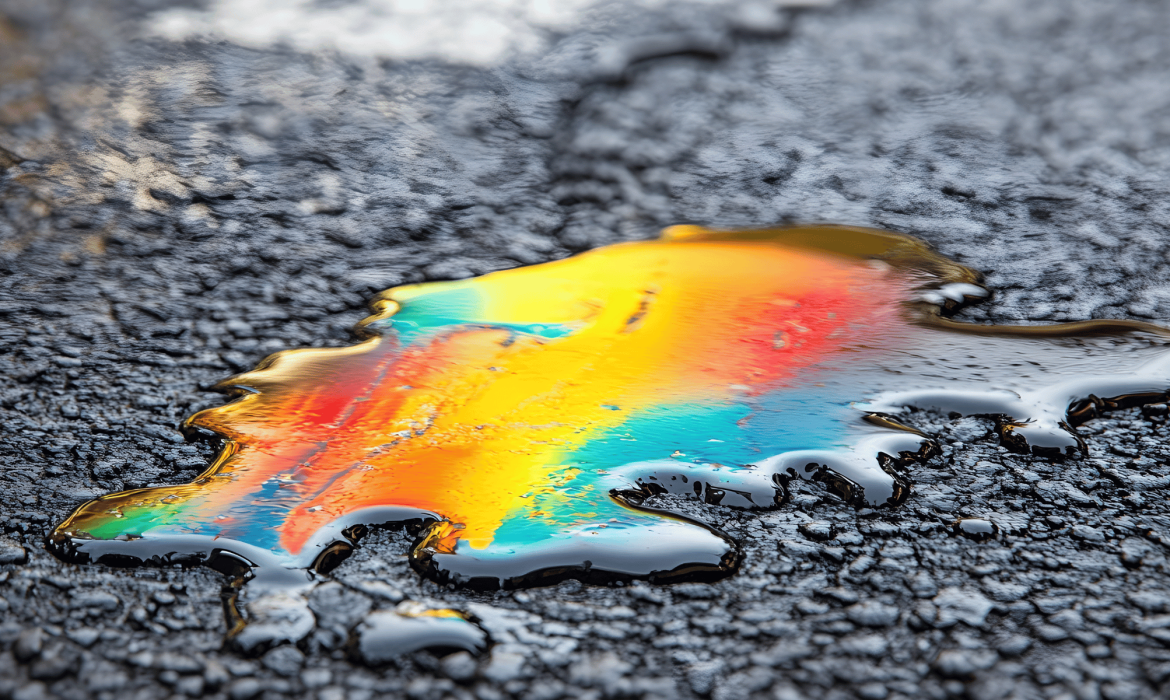Spots on your asphalt driveway not only do not look good, but may also deteriorate your surface with time. It is important to clean the spot immediately if it gets oily either due to a leaking car engine or a spilled can of oil to avoid the permanent harm. This manual will take you through simple and helpful methods of cleaning the asphalt driveway of oil spots.
Why It’s Important to Remove Oil Stains from Asphalt
It is a good idea to know it before getting into cleaning as to why oil stains are an issue:
Destroys Asphalt Surface: Oil attacks the asphalt binders resulting in crumbling and potholes.
The stains are more difficult to remove with time: The longer the oil is left the greater it penetrates and the harder it gets to clean.
Decreases Curb Appeal: Even a well-kept house would appear untidy with ugly oil stains.
Step-by-Step Guide to Remove Fresh Oil Spots
When you are early enough to catch an oil spill, then you can easily clean the spillage and avoid the long-term consequences.
Step 1: Blot the Excess Oil
Dry as much fresh oil as possible with paper towels, rags or even kitty litter.
Hint: Rubbing is not good, it distributes the oil.
Step 2: Apply Kitty Litter or Oil Absorbent
- Apply a lot of clay-based kitty litter or commercial oil absorbent (sold at auto shops) on the stain.
- Allow to rest at least 1- 2 hours or better overnight.
- Grind it lightly on the spot with a broom.
Step 3: Sweep and Dispose
As soon as the litter has taken in the oil:
- Clean up the litter that has been used and get rid of it.
- Always remember to dispose of some items according to local disposal laws, particularly in the case of motor oil.
How to Clean Old or Set-In Oil Stains
The old oil ideas are more difficult yet not hard to clean. You will have to work a little harder and the necessary cleaning products.
Method 1: Use a Degreaser or Commercial Oil Stain Remover
Asphalt-safe degreasers are available in the hardware store or online. Search such words as biodegradable, safe asphalt, or oil stain remover.
Steps:
- Rub the degreaser well over the part that is stained.
- Let it soak for 15-30 minutes.
- Cleanse with a hard bristle brush (not wire as it destroys the asphalt).
- Wash using a pressure washer or garden hose.
Do it again, in case of some stubborn stains.
Method 2: Use Dish Soap and Baking Soda
For a DIY approach:
- Combine baking soda with dawn dish soap (or another dish soap) to create a paste.
- Put the paste on the stain and leave it within 30 minutes.
- Scrub with a stiff brush.
- Rinse thoroughly.
Note: This technique is suitable with small and mild stains.
Pressure Washing for Deep Cleaning
A pressure washer may be very useful in the process of oil stain removal. It works best when used after applying a degreaser.
Tips for Pressure Washing:
- A fan-tip nozzle should be used to prevent the destruction of the asphalt.
- Maintain pressure of 2000- 3000 PSI.
- Do not leave the spray in the same position.
- Always wear protective gear.
When to Use a Poultice
Very hard stains may require a poultice, or rather a paste which absorbs the oil of the asphalt.
How to Make a Simple Poultice:
- Combine a fine absorbent (such as diatomaceous earth or powdered clay) with a solvent (such as acetone or commercial degreaser), to a thick paste.
- Apply the paste on the oil stain and wrap with a piece of plastic.
- Let it sit for 24-48 hours.
- De wrap and scrape off the paste and run under some water.
Note: Test with care. Certain solvents have the ability to destroy asphalt.
Eco-Friendly Options
Ecologically concerned? Try these greener methods:
Baking Soda and Vinegar: Add baking soda, spray vinegar and scrub after it fizzes.
Lemon Juice: This is a natural degreaser but it is not great with deep stains.
Eco-safe, biodegradable cleaners: Find plant-based degreasers.
These are more planet-friendly but they might not be as fast or could be applied again and again.
Preventing Future Oil Spots
After cleaning your drive way, then ensure you do some measures to prevent future stains.
Fix Leaky Vehicles
Even a small amount of oil, a couple of drops a day, will form a large, already set-in stain.
Use Drip Mats or Cardboard
Put a drip mat, oil pan or even a piece of cardboard underneath your car in case it leaks.
Seal Your Driveway
A sealcoat every 2-3 years on your asphalt provides a protective layer into your asphalt which makes cleaning it a bit easier as well as it being less susceptible to oil and water damage.
What Not to Use
Do not use the following materials in cleaning your asphalt driveway:
Bleach: It may spoil the surface and destroy neighbouring plants.
Wire Brushes: They can cut or mark the asphalt.
Solvents such as Gasoline: This is extremely flammable and has the potential to soften or dissolve asphalt.
When to Call a Professional
When you have tried several cleaning techniques and yet you see the stain appearing or the driveway has started to crumble or crack, you might have to seek professional assistance.
Professional Services Include:
- Hot water power washing
- Deep chemical cleaning
- Asphalt resurfacing/ patching
A large number of driveway repair firms provide such services. Find licensed and insured contractors that are highly rated.

